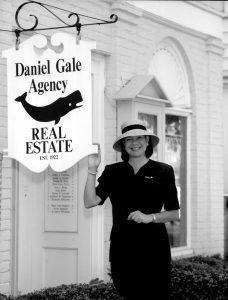On Wednesday, April 13, two guest speakers presented to the Port Jefferson Harbor Commission on the state of Port Jeff Harbor and its future.
George Hoffman, co-founder of the Setauket Harbor Task Force, shared the history of the harbor commission over the last two decades.
“Up until 2000, the commission hadn’t been created and every village kind of did its own thing and the [Town of Brookhaven] did its own thing,” he said. “You had overlapping regulations in terms of boat speeds and where you could clam and where you could moor.”
This changed after the 2000 Port Jefferson Harbor Management Plan, which directed the various coastal municipalities in the area on how to best manage the harbor. Today, the villages and the town coordinate their efforts through the harbor commission, which harmonizes laws to monitor boating safety, establish mooring fields and regulate maritime traffic. While the villages have succeeded in these areas, Hoffman suggests the commission now has the experience and know-how to devote greater attention to water quality.
“Now that you have all of the other issues kind of resolved, I think now it’s time to consider how this commission can start to help manage the harbor itself as an environmental entity,” Hoffman said.
MS4 regulations
During the first hour of a storm event, rain often carries harmful contaminants from lawns, roads and sidewalks, discharging oils, bacteria and particulate metals into nearby surface waters. This phenomenon poses a hazard to marine life.
In an effort to reduce contamination of surface waters during storm events, new state regulations will require coastal municipalities to develop a more comprehensive stormwater management program. New York State Department of Environmental Conservation released guidelines regulating small municipal stormwater sewer systems, known as MS4s. “I actually think that the Port Jeff Harbor Commission could be a great vehicle to help all the municipalities comply.”
— George Hoffman
Under the existing policy, local governments are given wide latitude over the maintenance of their MS4s. “In the ’50s and ’60s, we never really gave a thought about stormwater — we just figured if it goes into the harbor, then it will dilute and everything will be fine,” Hoffman said. “We found out that that’s just not the way to go. This really has significant impacts.”
With stricter directives and harsher penalties under these new regulations, Hoffman noted the need for personnel: “That’s never a good thing for municipalities because you have to fund those positions and budgets are always tough no matter where you are.” He added that the Port Jefferson Harbor Commission — which includes officials from the town as well as the villages of Port Jefferson, Belle Terre, Poquott and Old Field — already have the infrastructure in place through the commission to coordinate their efforts in complying with these directives.
“I actually think that the Port Jeff Harbor Commission could be a great vehicle to help all the municipalities comply,” Hoffman said. “If every village has to go out and hire its own computer programmer to do the mapping of the stormwater, and has to hire somebody to run the public meetings and has to identify all the groups that are interested — it seems to me that it would be better if we all pulled together through this commission and handle all of our MS4 responsibilities together.”
Acknowledging the limitations of an all-volunteer commission, Hoffman’s plan would have the various villages appropriate funds to hire part-time personnel to oversee MS4 regulatory compliance: “This can actually save your villages money because if everybody pools their resources together, you can probably just get one person in here — and it wouldn’t even have to be a full-time position — to help manage the MS4 regulations.”
Public outreach is also a major component of these new guidelines. Hoffman said that under the current policy, public hearings are not mandated. Now, municipalities must hold public hearings to identify the stakeholders in their areas and report on the quality of their surface waters. Again, Hoffman said the commission can make it easier to satisfy this condition.
With greater emphasis on water quality, he said the commission can also tap into the Long Island Sound Study, a program that offers grants to protect and restore the Sound.
“The Long Island Sound Study has been in existence now for 20 years,” Hoffman said. “It’s a pact between Connecticut and New York and all of the federal monies for the Long Island Sound go through it.” Referring to the Setauket Harbor Task Force, he added, “Our group is part of the Citizens Advisory Committee and we’re very active members of that group — that’s the one that gives out the grants for $10 million.”
Planting oysters and clams
Alan Duckworth, environmental analyst with the Town of Brookhaven, also addressed the commission during the meeting. His presentation highlighted a recent undertaking by the town to improve water quality of its harbors through the planting of large numbers of oysters and clams.
In recent years, the town has attempted to strengthen its understanding of the quality of its harbors and bays, and also the pathogens and contaminants that pollute them. While traditional testing indicates that the quality of Port Jeff Harbor has improved, Duckworth notes some notable deficiencies in these testing schemes.
“There are so many pathogens in Port Jeff Harbor and elsewhere,” he said. “Some of them are from humans, but a lot of them are from water fowl. DEC does checks for pathogens and uses E. coli as a marker.” However, acknowledging the limitations of these tests, he added, “They don’t separate human E. coli from avian E. coli. Obviously some of the pathogens are coming from human waste, but a lot of it could be coming from birds.”
The town grows approximately 1.5 million oysters and another 1.5 million clams every year that it puts out into various harbors and bays. The addition of these shellfish populations aids the local fishing industry as well as recreational shellfishing.
The oyster and clam populations serve as “filter feeders,” flushing harmful contaminants from the waters and spitting out filtered water. These shellfish have a beneficial impact on water quality, according to Duckworth.
The town’s planting activities also attempt to restore the natural populations that once flourished along the Island coastline. “What we see today is only a fragment of what used to occur around Long Island in the bays and harbors,” Duckworth said, adding, “Through disease and through overfishing, in some areas the natural populations are 1% of what they used to be. We put out oysters and clams to hopefully kickstart the next generation.”
“About 100,000 oysters are removing about 50% of the microalgae, which is a fantastic result.”
— Alan Duckworth
With funding from the National Fish and Wildlife Foundation’s Long Island Sound Futures Fund, the town has been able to track the effects of these shellfish populations on the quality of its surface waters. Measuring water quality with an instrument called a sonde, researchers performed two experiments — one within an area of 100,000 oysters in Port Jeff Harbor and another approximately 60 feet away from the oysters, which served as the control. Measuring the removal of microalgae by the oysters, the researchers found “about 100,000 oysters are removing about 50% of the microalgae, which is a fantastic result,” Duckworth said.In a separate test for turbidity, a measure of the number of sediments floating around in the water, he said, “They also remove about 50% of these sediments, which improves water clarity. That’s really important for photosynthetic organisms and things that require sunlight.” Duckworth added, “If you have 10 feet of dirty water, all of the things that live on the bottom and require sunlight can’t photosynthesize. When you clean that water, it’s really important for the animals and plants that live there.”
A final experiment tested whether these plantings have any effect on restoring the natural populations of shellfish in the harbor. The researchers put out bags of empty oysters shells and found that baby oysters began to move into those shells, an indicator that the planted oysters are adapting to their new environment.
“The oysters that we put out are now adults, they’re now producing larvae, and those larvae are actually finding places to settle, in this case the oyster shells,” Hoffman said. “They‘re actually reseeding Port Jeff Harbor.”
Reflecting upon these studies, Hoffman concluded that the work being done is having a positive effect on water quality and points to an optimistic future of the harbor. “This is a good story,” he said. “We’re showing that, yes, the oysters that we put out are cleaning the water, but they’re also helping to reseed and restock the natural populations that we all want to bring back.”







































